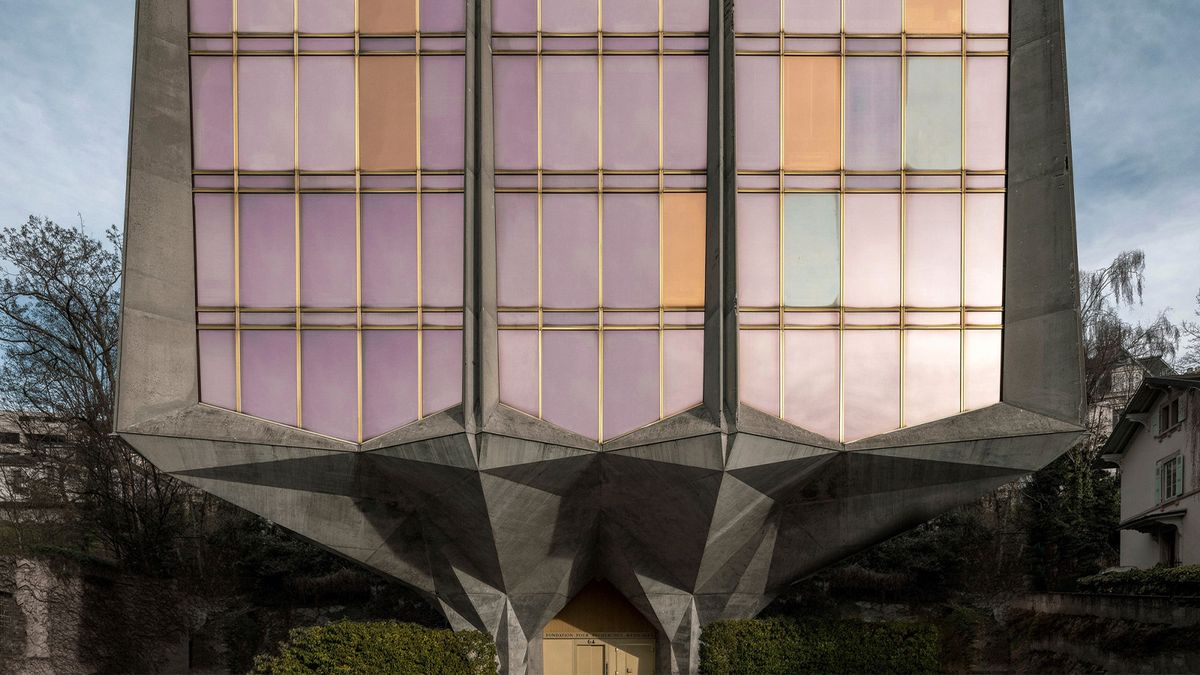To coincide with the London Design Festival 2022 (17 – 25 September), Vitra unveils its new London showroom, with a renovation of the grade II-listed Tramshed. The building was originally designed in 1905 by Emmanuel Vincent Harris, and served as an electricity transformer station for the Eastern London Tramway.
The showroom’s main entrance on Rivington Street
This is the first time Vitra has undertaken a renovation project of this scale and ambition, and the team, led by the company’s creative director of scenography, Till Weber, respectfully restored the space to highlight its original features. The building, Weber explains, was designed in classical mannerist style, featuring a stock brick façade introducing a double-height hall that allowed cranes and machinery to operate in the space. Inside, the company will showcase its contemporary collections – by the likes of Jasper Morrison and Barber Osgerby, who also happen to be neighbours – as well as reissues of design legends and pieces by Artek.
‘We approached the project with tremendous respect,’ explains Weber, ‘as it is a pleasure and a privilege to maintain historical buildings and their precious rare detailing and materials, preserving what is possible, revealing and showing the traces of time instead of covering them up.’ Throughout the space, original features were maintained as close to the original as possible, stripping out the unnecessary elements left from previous renovations and celebrating the building’s patina.
The final result, Weber notes, is ‘a reaction to the space’, showing how the colourful, modern forms of Vitra’s furniture and objects can interact with historical surroundings, the old and the new enriching each other.
Vitra London showroom: an eclectic harmony of spaces
Artworks by Erwan Bouroullec for The Wrong Shop behind the new Abalon sofas by Ronan and Erwan Bouroullec, launching in Spring 2023 and being previewed at the space for the first time
The showroom’s structure offers a sense of discovery: the grand hall’s space (the centre of what is dubbed ‘The Club’) is interrupted by a silver curtain at its centre, creating a secluded oval space and dividing the front area from the back.
On one side, a terrazzo bar (‘a communal centrepiece’, comments Weber) contributes to enliven the space, while the side aisle opposite presents a showcase of office furniture responding to a diverse range of needs – from meetings to workshops to focus work.
Behind the silver curtain is a composition of the ‘Soft Work’ sofa by Barber Osgerby. The rug is part of Peter Saville’s collection for Kvadrat
Upstairs, a mezzanine area is treated as an aesthetically calming retreat, and, as Weber notes, an opportunity to ‘show a collage of the Vitra approach to home interiors’. Plants, accessories and artworks (including a new body of work by Erwan Bouroullec for The Wrong Shop) complete the interiors.
Downstairs, the building’s basement was transformed to create ‘The Gallery’, an industrial white box that will be used for exhibitions – and that makes its debut with a presentation of Jean Prouve’s classics in a newly curated palette of colours. A further event and hospitality space (‘The Loft’) at the back of the building will open in 2023.
The side aisle opposite presents a showcase of office furniture responding to a diverse range of needs. The chairs are ‘Fauteuil Direction Pivotant’ by Jean Prouvé (the reissue of a 1951 design), while the shelving system is ‘Kaari’ by Ronan & Erwan Bouroullec for Artek
‘It was necessary to find an interior language compatible with the impressive industrial architecture of the Tramshed,’ explains Weber. The colour scheme chosen for the main space – based on white, dark red and green – echoes the building’s existing architectural colours. ‘Carefully curating the selection of furnishings, we aimed for a novel interplay between the historic building’s existing colours and materials and new elements and furniture by Vitra and Artek.
‘This space for us is an opportunity to play, and it offers it all: we can do a museum-style set-up, we can present new pieces, and we can offer different ways to look at focused and communal work. It shows that Vitra can do transversal spaces well.’ §
The gallery in the building’s basement is dedicated to a display of Jean Prouvé’s designs reissued by Vitra. The exhibition includes the Fauteuil Kangourou (1948, centre of front row) a newly-reissued limited edition of 100 pieces
The terrazzo bar
Pieces from the Alcove Work collection by Ronan and Erwan Bouroullec
The showroom’s material and textile library at the back, currently featuring the palettes that characterise the interiors of the space
The mezzanine, designed as an aesthetically calming retreat and featuring chairs and shelves by Jean Prouvé, the Polder sofa by Hella Jongerius, Fauteuil de Salon by Jean Prouvé (1939) and pieces by Artek including the Tea Trolley 900 by Alvar Aalto (1930). Lighting includes an Akari lamp by Isamu Noguchi (1951) hanging over the space
http://dlvr.it/SYf0YJ
Abonați-vă la:
Postare comentarii (Atom)
Step inside La Tulipe, a flower-shaped brutalist beauty by Jack Vicajee Bertoli in Geneva
Sprouting from the ground, nicknamed La Tulipe, the Fondation Pour Recherches Médicales building by Jack Vicajee Bertoli is undergoing a two...

-
The Sotheby’s Milan charity auction in aid of UNICEF takes place tomorrow, including 15 designs from the "Design to Move; 40 Creations ...
-
Hedi Slimane pays tribute to the organic form of Jean Arp’s work Ptolémée II, in the latest itineration of the Celine Bijoux d’Artistes Proj...
-
Mareterra, a Monaco project boasting contributions by Renzo Piano, Norman Foster, Stefano Boeri and Tadao Ando, is set to become a new neigh...

Niciun comentariu:
Trimiteți un comentariu